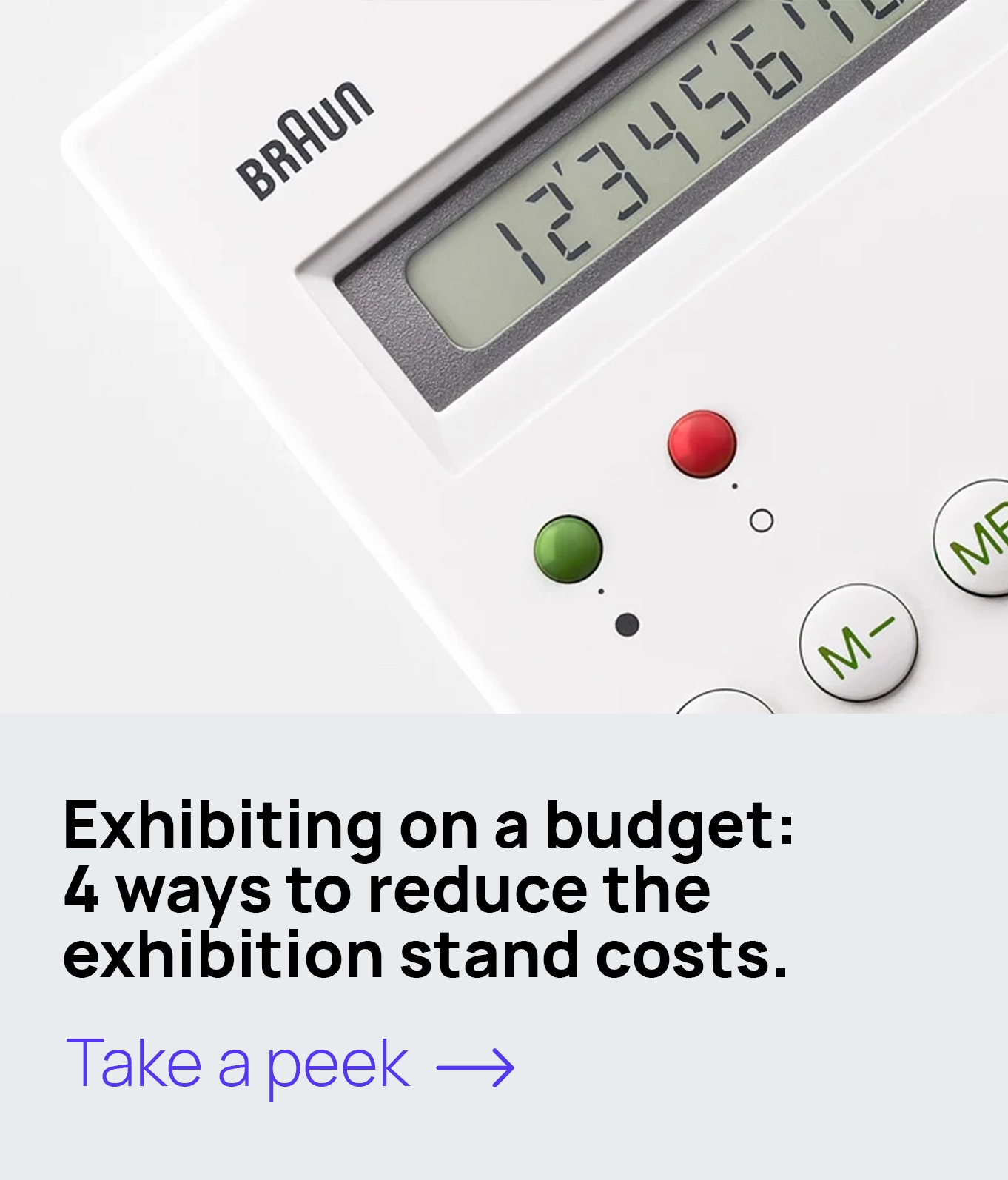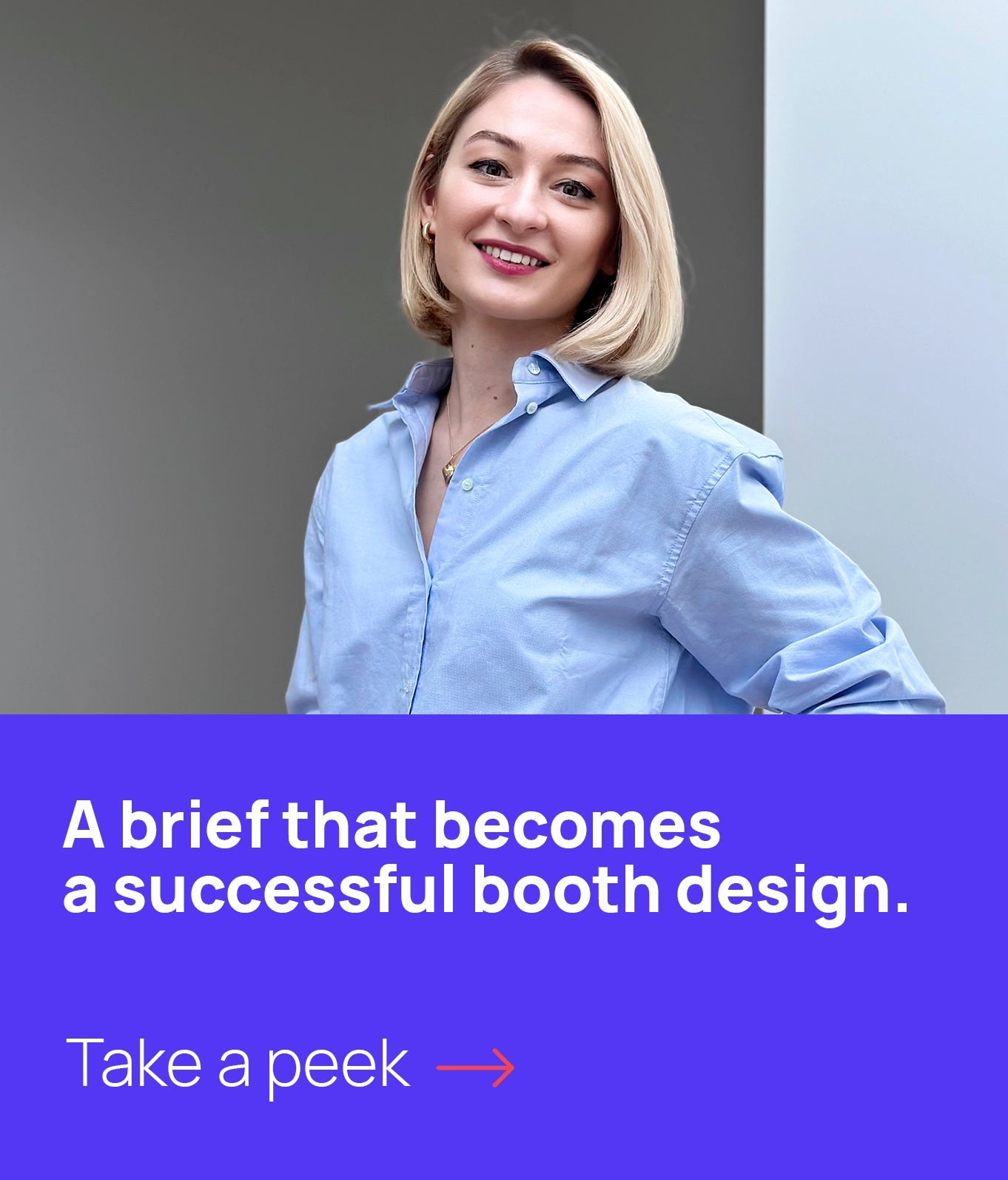Mistakes are a normal part of human nature. In fact, what we call the “experience” is usually just a nicely combined set of faults and the ultimate knowledge of what won’t work. But it’s far better to form the experience of the mistakes made by others. When you grab the brand-new booth design render, you rush to your client to be among the first to pitch the project. But we strongly recommend to breathe deeply and to carefully look through the documents, drawings and sketches you are going to demonstrate. There is a chance some of the exhibition booth design mistakes got inside.
1. Inadequate use of space
The exhibition space is precious, and every tiny part of it should be used correctly. While marketing goals go first, remember to be practical as well. All the empty boxes, torn packages, and pieces of scotch tape should be kept somewhere before the end of the day. The exhibitors will also need some little space to change, to grab a glass of water and to breathe out, so don’t forget about it as well.
2. Adding the unnecessary
Sometimes you are tempted to add an element or an object whenever you see an empty spot. It is not a good decision and it could lead to overloading your stand design. Remember, it is not the objects but the space between them that makes some interior look luxurious and some – cheap. This applies to the exhibition booth design as well.
3. Undefined goals
The participation in the fair is not an end in itself. One has to define what is the main purpose of the exhibition, and the design concept should be based on it. If you launch a new product or if you just came to meet some new people or if you want to remind your competitors you’re still alive – all of these goals will require different approaches. So a good booth design isn’t just about being “nice”, it’s an instrument and it has to be used correctly.
4. Attracting wrong people
Every sort of marketing communication involves defining the target audience. In fact, it should be the very first step for each and every marketing activity, and exhibitions require that too. The exhibition booth design should be attractive and be inviting, but it should only attract the right people. A fascinating transparent construction filled with water and a dozen of confused goldfishes will certainly attract a lot of people, but we strongly doubt your prospects will be among them. So whenever you want to add some “wow-factor” to your exhibition design, consult a specialist if the element you want to use is appropriate and helpful in reaching the exhibition goals.
5. Being too wordy
It is a common mistake – a company desires to tell the world everything about their products and services. Using the exhibition booth design for that is not a good idea. It is best to come up with a laconic message that can be captured by the passer-by easily. Psychologists say the length of such message shouldn’t exceed 5 words. So if you are innovative, client-oriented, technological, experienced, flexible, quick, efficient and young – just halve the list at first. The main thing in your booth design is your brand identity, the visitor shouldn’t be confused and should know for sure what company she has been talking to right now. All other parts of the message can be disclosed during a conversation inside the booth.
6. Not taking the traffic flow into account
This is especially the case when you have a corner stand. Which way will more people pass? Experienced stand designers know which direction the human traffic will flow during the exhibition and always try to concentrate the attractive elements of the design there. The conversation area should also be located respectively.
7. Unclear signage
An average exhibition visitor is very picky. The amount of visual information around is extremely confusing, and the signage can be a sort of a lighthouse in this chaos. If your signage is clear, moderately creative and attractive, chances are high it’ll catch the visitor’s eye. Your clients may not know all the subtleties of the booth design, so if the design you offer contains any of these mistakes, they’ll only notice it during the fair or even after it’s over. So if you don’t want to lose a client due to these design faults it is better to work with experienced stand designers who won’t let any of these happen.






Leave A Comment